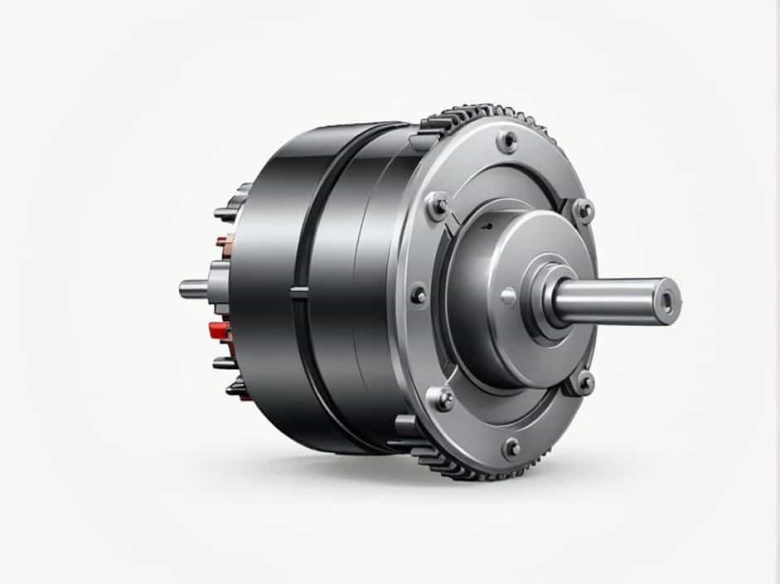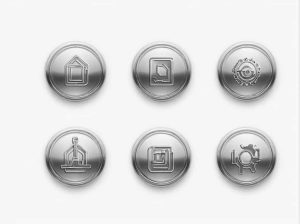Electric motors are essential in various industrial and commercial applications. Among them synchronous and asynchronous motors are two common types used in power systems and machinery. Understanding their differences is crucial when selecting the right motor for a specific application.
This topic explains the key differences between synchronous and asynchronous motors their working principles advantages disadvantages and common applications.
What is a Synchronous Motor?
A synchronous motor is an AC motor in which the rotor rotates at the same speed as the stator’s magnetic field. This means there is no slip between the rotor and the rotating magnetic field.
How a Synchronous Motor Works
- The stator is supplied with three-phase AC power creating a rotating magnetic field.
- The rotor is either electrically excited or uses permanent magnets.
- The rotor locks into synchronization with the stator’s magnetic field maintaining a constant speed.
Key Characteristics of Synchronous Motors
✔ Constant Speed – Runs at a fixed speed regardless of load variations.
✔ Requires External Excitation – Needs a DC excitation system or permanent magnets.
✔ No Slip – The rotor speed matches the stator’s rotating magnetic field speed.
Advantages of Synchronous Motors
✔ High efficiency and power factor correction.
✔ Precise speed control making them ideal for applications like industrial automation.
✔ No slip ensuring stable performance under varying loads.
Disadvantages of Synchronous Motors
✖ Requires an external excitation system.
✖ More complex construction and higher initial cost.
✖ Cannot start on its own; needs an additional starting mechanism.
Common Applications of Synchronous Motors
✔ Industrial machinery requiring constant speed.
✔ Power plants for power factor correction.
✔ High-precision applications like robotics and conveyors.
What is an Asynchronous Motor?
An asynchronous motor also known as an induction motor operates with a rotor speed slightly lower than the stator’s magnetic field speed. This speed difference is known as slip which is necessary for the motor to function.
How an Asynchronous Motor Works
- The stator is supplied with AC power creating a rotating magnetic field.
- This induces a current in the rotor (hence the name induction motor).
- The rotor develops its own magnetic field and starts rotating.
- The rotor speed is always slightly less than the synchronous speed due to slip.
Key Characteristics of Asynchronous Motors
✔ Self-Starting – No external excitation is needed.
✔ Slip Exists – The rotor speed is always slightly lower than the synchronous speed.
✔ Simple and Robust – Requires minimal maintenance.
Advantages of Asynchronous Motors
✔ Simple design making them cost-effective and reliable.
✔ Requires no external excitation or synchronization.
✔ Available in single-phase and three-phase versions suitable for various applications.
Disadvantages of Asynchronous Motors
✖ Lower efficiency compared to synchronous motors.
✖ Speed varies slightly with load changes.
✖ Higher starting current may cause electrical stress.
Common Applications of Asynchronous Motors
✔ Household appliances like fans and washing machines.
✔ Industrial machines pumps and compressors.
✔ HVAC systems and air conditioning units.
Key Differences Between Synchronous and Asynchronous Motors
| Feature | Synchronous Motor | Asynchronous Motor (Induction Motor) |
|---|---|---|
| Speed | Constant equal to synchronous speed | Slightly less than synchronous speed due to slip |
| Slip | No slip (0%) | Has slip (typically 0.5% – 6%) |
| Starting Mechanism | Requires external excitation or additional starter | Self-starting |
| Efficiency | Higher | Lower compared to synchronous motors |
| Construction Complexity | More complex (needs excitation) | Simpler and more robust |
| Power Factor | Can operate at leading lagging or unity power factor | Operates at lagging power factor |
| Cost | Higher initial cost | Lower cost widely used |
| Applications | Used in applications requiring constant speed | Common in general-purpose applications |
Choosing Between Synchronous and Asynchronous Motors
When selecting between the two consider the following factors:
✔ For Precision Speed Control → Choose a synchronous motor.
✔ For Cost-Effective and Robust Operation → Choose an asynchronous motor.
✔ For Power Factor Correction → Synchronous motors help improve power factor.
✔ For Self-Starting Simplicity → Asynchronous motors are ideal.
Both synchronous and asynchronous motors have unique advantages and are suited for different applications. Synchronous motors are best for precise speed control and high efficiency while asynchronous motors are preferred for their simplicity reliability and ease of use. Understanding these differences helps in selecting the most suitable motor for industrial commercial and household applications.



